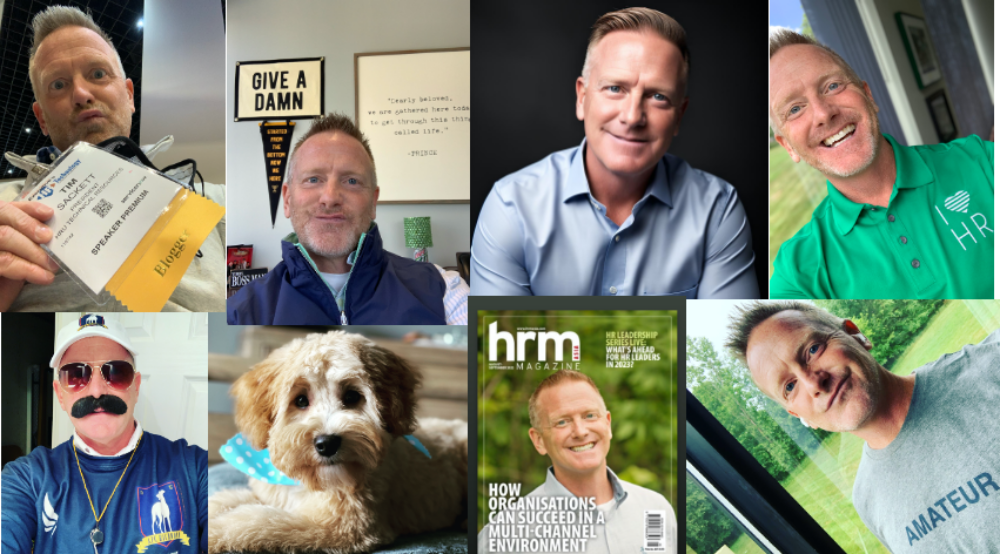Welcome to the reboot of Career Confessions of Gen Z! I started this in 2018 with my Gen Z son, Cameron, and the response was off the charts. So, in 2019 I found 8 great Gen Z HR, TA, and Marketing pros to continue the Gen Z content. Enjoy!
For as long as I can remember, it often feels like every other article or conference discussion I see is a dissertation about the millennial impact on the workforce. If you read that first sentence, you may have yawned and already moved on…but I sincerely hope you didn’t. There’s been so much continued discussion about millennials that I fear today’s next generation, GenZ, is getting overlooked. I don’t just mean overlooked by older generations; I mean overlooked by generational allies – fringe GenZs such as myself. This mistake is so incredibly short-sighted, inconsiderate, and misunderstood that it brings to risk a perpetuation of the very division that millennial generations are continually subjected to. I write all of this to admit that at some point I became part of the problem.
I was born in ‘91, only a few short years before my Gen Z peers. I consider myself a “fringer”. Most of my experiences align me closer to GenZ than other millennial generations. I entered professional life at the height of millennial discussions (though it hasn’t ceased in frequency), with my first stab at a career that led me to the insurance industry. You can make a great living in insurance, and there is tremendous upside in the amount of influence all millennial generations will have on that industry.
That said, every industry has had its generational challenges, but I think all insurance pros will agree their industry is near the top of the list. It’s nobody’s fault; it just exists. So during the first weeks, months, and years of my career, I heard the voices of millennial driven articles loud and clear as I lived it firsthand. For many reasons, I couldn’t wait to become a mentor myself and help break the chain of monotonous top down mentorship and leadership I was experiencing.
My first major mentorship opportunity came when I was 26. I felt like I was blitzing through the insurance industry, and I was ready to help others do the same. So how did I do?
I may or may not have started off strong. I worked to be inclusive and transparent to some degree, making sure my mentee was included in exciting events and meetings that would give tremendous exposure to top leadership and influencers. I tried to push my mentee but never beyond something I wouldn’t do myself. I held weekly syncs with the goal being an hour of uninterrupted focus on successes, development opportunities, and aspirations. Yet, we barely made it past the honeymoon phase.
I’ve given the relationship much reflection, and I think I failed for the following reasons. First, while I thought I was doing all of these great things for the mentee, I simply wasn’t actually allowing time for their own self-discovery. Second, and perhaps more importantly – maybe I was intimidated by their strategies, operational efficiency, and methods of connecting to the industry. Despite the few years that separated us in age, our developments were greatly shaped in different forms within that gap. Forget who knew more about actually performing our current responsibilities.
In the few years since I graduated college, tech was being used differently in so many areas. I leaned heavily on Facebook (among other things), while they focused on Insta, Snapchat, and Twitter (among other things). I posted once in a while; they posted all the time. But, they didn’t just post; they used their Socials as a medium for connecting with businesses and building relationships in a way that seemed like a stretch, even for some industry vets. Beyond social platforms, they had things like Uber for pretty much all of college, whereas it wasn’t available to my peers and me until roughly a year after graduating (probably for the best). Even though we only had those few years between us, they were thinking on a new level, with new ideas that were non-traditional to the current state of the industry but very progressive to achieving a new level of success.
I could write on this all day. I still cringe when I think about how hard I failed on something I was so certain I would succeed at. I’ll never stop feeling bad about initially failing GenZ, but it brought to light many valuable lessons. To my fellow fringers, please take caution. Love your fellow generational warriors, but don’t forget that it’s already time to focus on bringing in the next generation with open arms. Each year moves faster and faster, and we will be far more successful on the same side of the water than with a bridge in between.
My story is different and should be different than yours, but regardless – think about it. Let’s embrace the new knowledge and skills that incoming generations bring by not dismissing the intensifying knowledge gap created by rapid changes in technology. Let’s take everything that we’ve learned from our experiences in the trenches of a generational gap to ensure it doesn’t happen again. And most importantly, let’s recognize the individuality of each “millennial” generation.
 Quitin Meek a talent consultant at Pillar Technology (part of Accenture Industry X.0). Also an active member of Detroit’s startup and tech community. Every day is something new and challenging, and I am learning more than ever before. I’m finding that I’ve become a lifelong student, and I’m excited to see how that continues to shape the road ahead.
Quitin Meek a talent consultant at Pillar Technology (part of Accenture Industry X.0). Also an active member of Detroit’s startup and tech community. Every day is something new and challenging, and I am learning more than ever before. I’m finding that I’ve become a lifelong student, and I’m excited to see how that continues to shape the road ahead.




